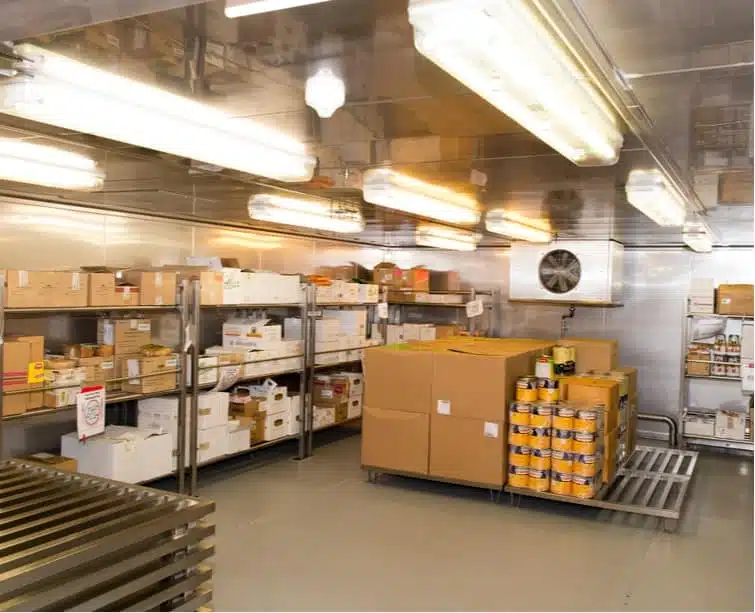Article At A Glance
- Learn about temperature control, efficient inventory management, tight margins, safety, compliance, and sustainability pose challenges in food distribution.
- Learn about success strategies like utilizing technology for efficiency and automation.
- Collaborate, prioritize safety, use data for optimization, and stay customer-focused in food distribution.
The world of wholesale food distribution looks straightforward from the outside. However, every facet of the pick, pack, and ship process has various challenges. Successful foodservice distribution companies must navigate these challenges and design strategies to ensure long-term economic viability.
This blog post explores wholesale food distribution challenges and tried-and-tested strategies that can help businesses overcome them.
The Top Challenges Faced In Food Service Distribution
Some of the biggest challenges facing foodservice distribution companies include the following.
Temperature-Controlled Logistics: Maintaining Product Freshness
Product shelf life is incredibly short in the food niche. Most fresh produce spends a significant chunk of its shelf life in transit. Therefore, there’s little margin for error during the transportation process.
Distribution companies must find ways to transport perishable goods like dairy, meats, and fresh vegetables safely from the manufacturer to the retail outlet and consumers. Transporting these products under the wrong temperature or humidity levels can render them unusable upon arrival.
Therefore, food service distribution companies must find a way to maintain the ideal environment across the supply chain, even for deliveries that require long-distance transportation and long to medium-term storage.
Efficient Inventory Management
One of the greatest wholesale food distribution challenges facing businesses in this niche is ensuring enough stock to meet demand while preventing waste. Most struggle in this area because seasonal changes in demand for food items make efficient inventory management a tall order.
It’s not always easy to know when customers need certain foods in large quantities and when they don’t. Therefore, businesses are constantly battling the risk of lost revenue, potential food waste, and increased overhead due to understocking or overstocking.
Tight Profit Margins
The food service distribution industry has notoriously tight profit margins for various reasons. First, the low barrier to entry means there are always multiple players vying for the same market share at all times. The intense competition leads to price wars, which forces companies to let go of some of their profits.
Spoilage and waste, which are some of the most common wholesale food distribution challenges, also cause a dent in profits as food distributors may shoulder losses of foods and beverages alone.
Rising operational costs also continue to put a squeeze on profitability. The industry’s volatility also makes it difficult for businesses to predict costs and try to maintain a stable profit margin.
Safety and Compliance
Food supply chain networks are now more diverse than ever. Ordinarily, this is a net positive as it further simplifies the food distribution process. However, the diversity equates to a higher risk of safety failures.
Thus, food service distribution companies are constantly navigating a minefield of stringent regulations. Meeting compliance standards is also more challenging. Product recalls and warning letters from regulators like the FDA can have far-reaching repercussions for the distributors.
Evolving Customer Expectations
Customer expectations continue to evolve in different industries, and the food distribution sector is no different.
There’s an increasing demand for speed and convenience. One-size-fits-all approaches are also no longer as effective in the face of rising competition. Ethical sourcing and sustainability are also on the front burner for many customers.
Meeting these expectations while navigating other industry bottlenecks is challenging for many businesses.
Sustainability Challenges in Food Distribution
Foodservice distribution has a significant impact on the environment. Businesses are pressured to adopt more sustainable practices, such as increased transportation efficiency to lower carbon emissions, cutting down on excessive packaging, eliminating food waste, and more.
Many businesses struggle to balance environmental responsibility and maintain a healthy bottom line.
Strategies for Overcoming These Challenges and Achieving Success
Overcoming the above wholesale food distribution challenges is possible. Here are some of the strategies businesses can adopt.
Leveraging Technology
Food distribution businesses can leverage technology in diverse ways. Resource planning solutions can help you to better manage the workflow across your business. You can automate processes and watch the entire supply chain on one screen.
Technology can also improve picking and packing accuracy and make inventory management less strenuous. Using technology well enough is a sure way to reduce waste, improve efficiency, and keep your operations efficient.
Additional read: Latest Trends Shaping The Future Of Wholesale Food Service Distribution
Collaboration and Partnerships
Entering into partnerships with other suppliers, retailers, and logistics partners lightens the load on your business. Think of this like a pack of wolves working together to bring down an outsized enemy.
Quality collaborations and partnerships can help reduce food waste and supply chain disruption. They can also increase your market access and reach within the industry.
Data-Driven Decision Making
Data-driven decision-making can help your business in many ways. First, analyzing historical sales data and real-time trends can help your business navigate the uncertainties of seasonal demand.
Data analysis can also help you optimize transportation routes, maintain competitive pricing, and more. It can also help improve your overall operation efficiency. For example, study data collated from your trucks will tell you when they are due for servicing, helping you avoid costly breakdowns while in transit.
Focusing on Food Safety and Quality Control
Savvy food distribution businesses cannot afford to relegate food safety and quality control measures to the back burner. It’s important to set up rigorous inspection processes to ensure compliance standards adherence.
While thinking about quality control, you must not forget to invest in training programs for your staff members. It only takes one misstep for the regulators to come calling.
Catering To Customer Demands
One of the surest routes to success in the food service distribution niche is understanding and anticipating customers’ demands. Staying current on consumer preferences and market trends will allow your brand to tailor offerings and provide value in a way the competition cannot.
Elevate Your Food Service Distribution Journey With B&B Food Services
B & B Food Services excels at helping businesses in the food distribution industry navigate wholesale food distribution challenges. Our combination of industry expertise and hands-on experience allows us to provide a tailored wholesale food distribution strategy for any business, irrespective of size.
Contact us today at (815) 834-2621 to schedule a consultation.


